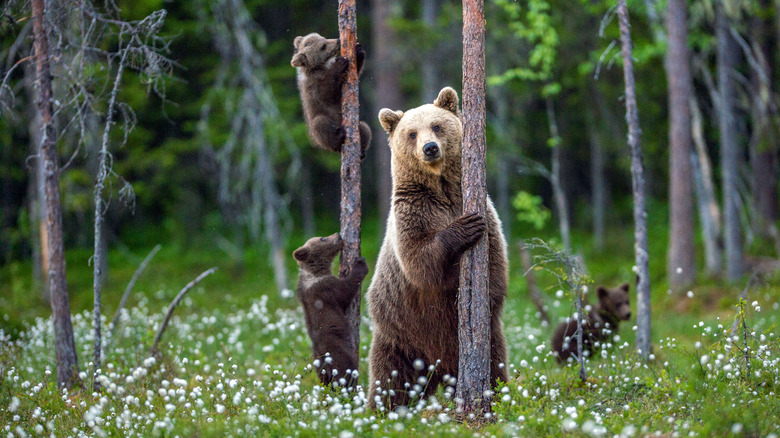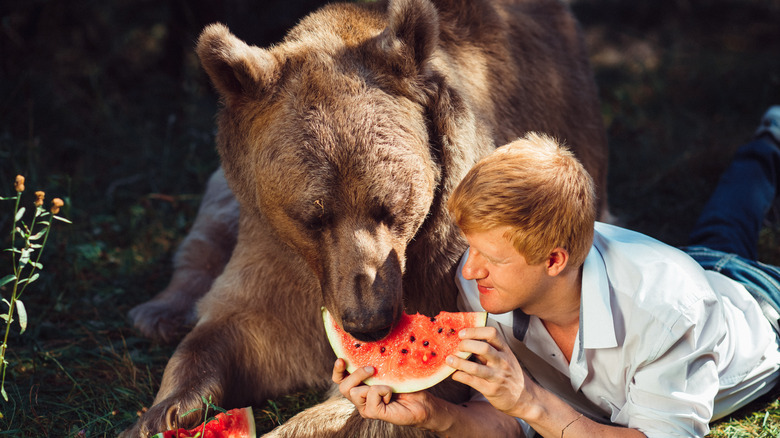Canadian Bears And Indigenous Languages Share This Astounding Link
Out of all the human migration stories, the Bering Strait Land Bridge Theory might be the most well-known. As the National Parks Service summarizes, humans crossed over from Siberia to Alaska during the last Ice Age some 16,500 years ago. Some folks stayed put, others went further south, and still, others branched off south and east, and so on. Fast forward thousands of years from those first, intrepid, snow-and-wind-blown people, and we've got every single North American indigenous tribe from Canada down to the Aztecs in Mexico.
Thousands of years is a long time for folks to get settled and stay separated but intermingled. North American tribes developed a full 57 language families (per Britannica), with 150 whole languages persisting through European colonization even to the present (per Babbel). Now, as the Conversation explains, we've got new evidence of how people migrated and fused with their ecosystems, and it comes from a seemingly unexpected source: bears.
The Raincoast Conservation Foundation conducted a study that shows a nigh-perfect overlap between three human language groups — Tsimshian, Northern Wakashan, and Salishan Nuxalk — and the DNA of three distinct grizzly bear groups. This means that both bears and humans stayed put in specific regions for such a long time that their behaviors developed in a similar way. It's not because they couldn't pass mountains or rivers. Rather, they already had everything they needed.
Bears and people shaped by the same environment
As the original paper on the Rainforest Conservation Foundation says, the findings in question came as no surprise to indigenous peoples who participated in the study. The close relationship between bears and people is not anything new to those to whom the bears lived near.
Elders tell the story of bears and people scouring for the same food (we're both omnivores), and both bears and people pass on their knowledge through social learning. Local bears and people also both tended to wander a bit into the outskirts of their area, but in the end stayed close to home. They exhibited these same cross-species behavior patterns generation after generation, using the same resources in the process. The landscape shaped both bears and humans in distinct, yet related ways.
This kind of "biocultural diversity" had previously been examined by Larry Gorenflo, professor at Penn State College. As Geographical says, Gorenflo's team did a massive 2012 search into 6,900 human languages (yes, there's that many) across the entire world. They found that 3,202 languages occurred in just 35 areas, such as the East Melanesian Islands, the Guinean Forests of West Africa, Mesoamerica, and more. These regions are high in biodiversity, which would have proven essential for early humans. And so, both they and other animals stuck around and co-developed. In the end, these findings signify a bridge — like the Bering Strait Land Bridge itself — between tribal ecology and western science.

